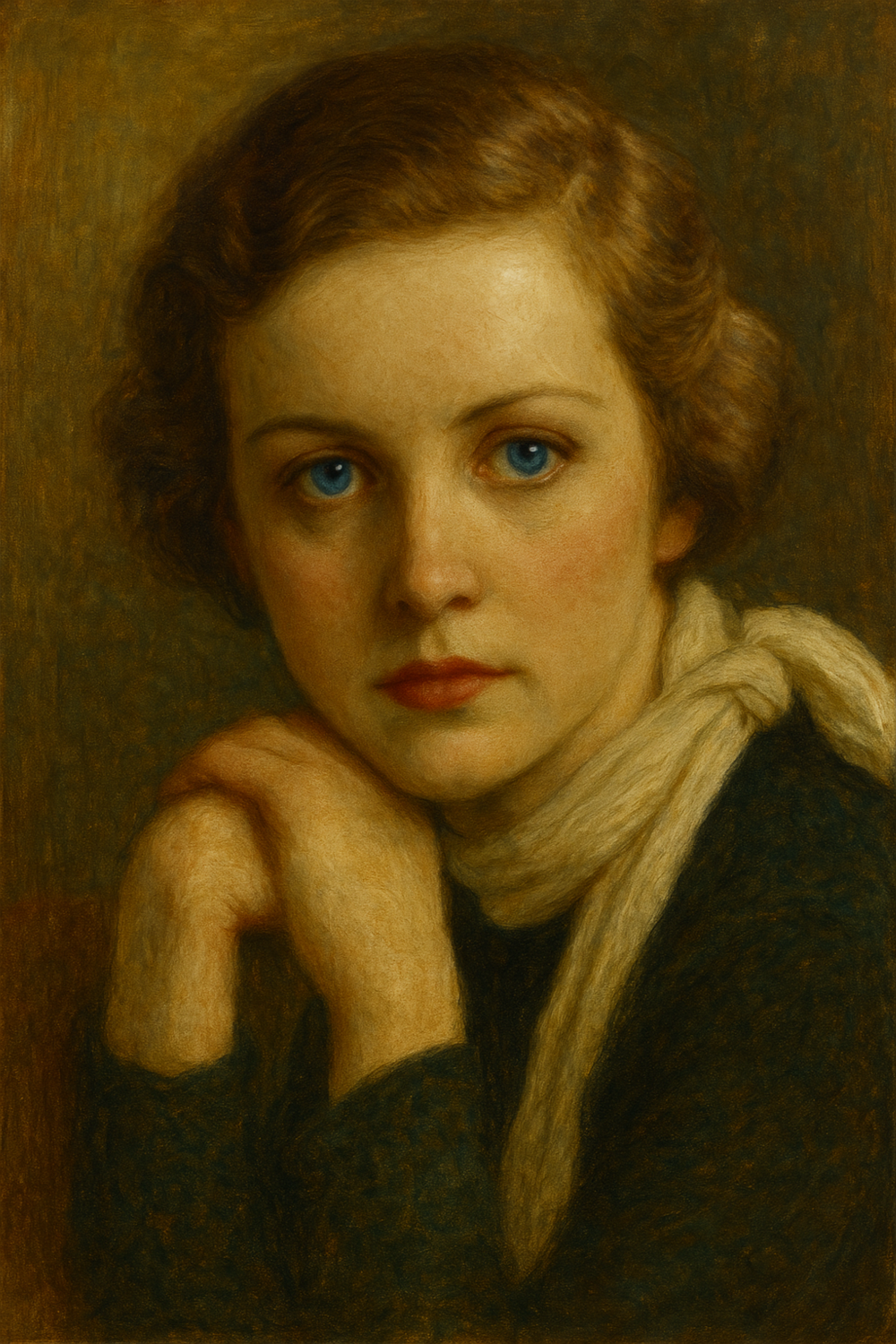
Pamela Mitford: The Quiet Rebel of the Mitford Sisters
Share
In a family defined by sharp wit, political extremes, and global headlines, Pamela Mitford often slips under the radar. She wasn’t a bestselling author like Nancy. She wasn’t a fascist like Diana, nor did she chase Hitler’s approval like Unity. She wasn’t a Communist firebrand like Decca or a devoted Duchess like Deborah. Instead, Pamela was the sister who stayed close to the soil — literally and spiritually — cultivating chickens, cheese, and peace.
And yet, that very decision to live quietly makes Pamela perhaps one of the most fascinating Mitfords of all.
Born into Eccentricity
Pamela Freeman-Mitford was born on November 25, 1907, the second of the seven Mitford children. She grew up in the chaotic and aristocratic world of her eccentric parents, Lord and Lady Redesdale. Her childhood, like that of her siblings, was marked by governesses, invented languages (like ‘Boudledidge’), and endless imagination.
The Family Photographs
Pam recalled in a biography about her sister Nancy in 1980 (7 years after Nancy’s death), of the family getting dressed up for a group photo in 1928.
Pictured below: the family portrait every 4 years (c. late 1920s). Pamela is seated beside her father.

“Oh yes, (I remember it) very well... a photographer used to come out from Oxford, and it bored us intensely. We had to dress up in our best clothes and sit there for hours while he organized it all. Then the photograph would emerge. And it was done about every four years as we grew up, so that there was a continuous line of them. On the far left is my mother. And then on the top steps is Nancy. And then Tom and then I'm next and then my father. And then if you go down again, Unity is sitting on the lowest step and Diana a little bit above her. Then as Jessica and Deborah again on the lowest step and then there's the two dogs, Ruby and Andy.”
The Forgotten Sister?
But where her sisters gravitated toward notoriety, performance, and politics, Pamela preferred animals, nature, and country life. She was always described as “the rural Mitford,” a label that may seem dismissive, but in reality, this was her superpower.
There’s an old saying in big families: the quiet one is often the most observant. Pamela's role within the Mitford orbit was that of the grounding force. She wasn’t interested in ideological battles or scandalous love affairs. Instead, she forged her own path with gentle defiance — opting out of the Mitford mania for the kind of life that felt genuine to her.
Love, Cheese, and Liberty
After a brief marriage to physicist and military man Derek Jackson in 1936, a union that surprised the family, Pamela began living with an Italian horsewoman named Giuditta Tommasi after her divorce. They shared a home together in the Cotswolds for more than two decades. While neither woman publicly labeled their relationship, there has been much speculation (even within the family) that it was romantic.
Nancy Mitford once described Pam as being “the only Mitford sister who is ever truly happy.” And that happiness seemed to come not from public acclaim or political passion, but from her life in the English countryside. She kept horses, goats, made her own cheese, and was known for her remarkable skill in the kitchen. It’s no exaggeration to say she was something of a proto-farm-to-table foodie, long before it became fashionable.
Pam’s Cotswold farm became a refuge of calm in contrast to the political hurricanes her sisters conjured. While Diana was imprisoned during World War II for her fascist sympathies, and Unity attempted suicide after Hitler’s downfall, Pamela kept a low profile, tending to her animals and making jam.
The Anchor in the Storm
Despite not writing books or making headlines, Pamela remained a central figure in the family — a source of comfort and consistency. When Nancy was dying of cancer in 1973, it was Pamela who spent time with her in her final days. And when Unity returned from her failed suicide attempt, it was Pam who cared for her, even when others found it too emotionally draining.
Pam’s loyalty to her family was unshakeable, but it was never naive. She didn’t agree with Diana’s fascism or Decca’s (Jessica) communism. She simply didn’t see the need to fight every ideological battle. That, in and of itself, was a quiet act of resistance.
Later Life and Legacy
Pamela remained in the Cotswolds for most of her life, ultimately moving to Caxton Hall in Gloucestershire. Though she lived far from the literary salons of Paris or the gossip-filled drawing rooms of Belgravia, she never seemed to regret the road less traveled. She was close with Deborah, the youngest Mitford, and they shared a lifelong love of animals and English tradition.
In her later years, Pamela was known for her sharp wit, deep kindness, and no-nonsense approach to life. Though she never wrote a memoir like some of her sisters, she appears in nearly all of theirs — always described as kind, competent, and utterly uninterested in fame.
Pamela died in 1994 at the age of 86, the third Mitford sibling to pass away. By the time of her death, public fascination with the Mitford sisters had only grown. Books, documentaries, and biographies continued to swirl around the family, and Pamela’s role — while often peripheral in those tellings — remains essential for those who seek to understand the heart of the Mitford legacy.
The Power of Choosing Peace
In many ways, Pamela Mitford’s life serves as a counterpoint to the high-octane drama of her siblings. She shows us that rebellion doesn’t always look like protest marches or political manifestos. Sometimes, rebellion is choosing a quieter, kinder life — one that’s honest, loving, and rooted in real joys.
Pam was no less interesting than her sisters; she was simply less loud. And in the cacophony of the Mitford mythos, her silence speaks volumes.
***
Take a moment to explore our new portrait of Pamela Mitford, the sister who stayed close to the soil. Inspired by the modern post-war style with an expressionist edge, and part of our exclusive *Mitford Series* collection.
For more on the Mitford family, visit our reading list here.
